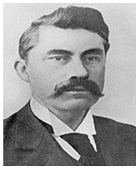SCOPE OF MICROBIOLOGY
The field of Microbiology has tremendous possibilities and a very bright future, and intending or prospective students who are seeking or pursuing their career as prospective microbiologist has golden opportunities that await them upon graduation due to their invaluable relevance in virtually all works of life. There are many areas of specialization in microbiology as […]
SCOPE OF MICROBIOLOGY Read More »
General Microbiology









